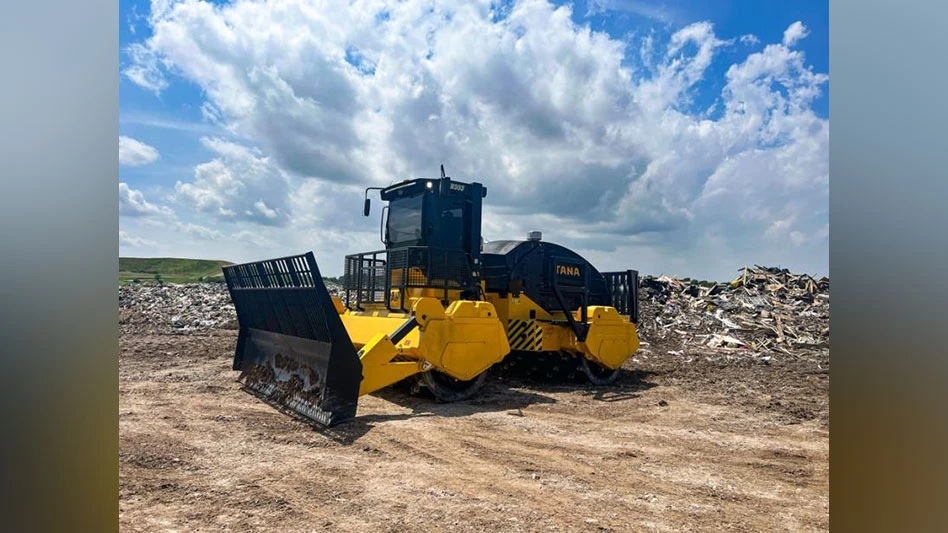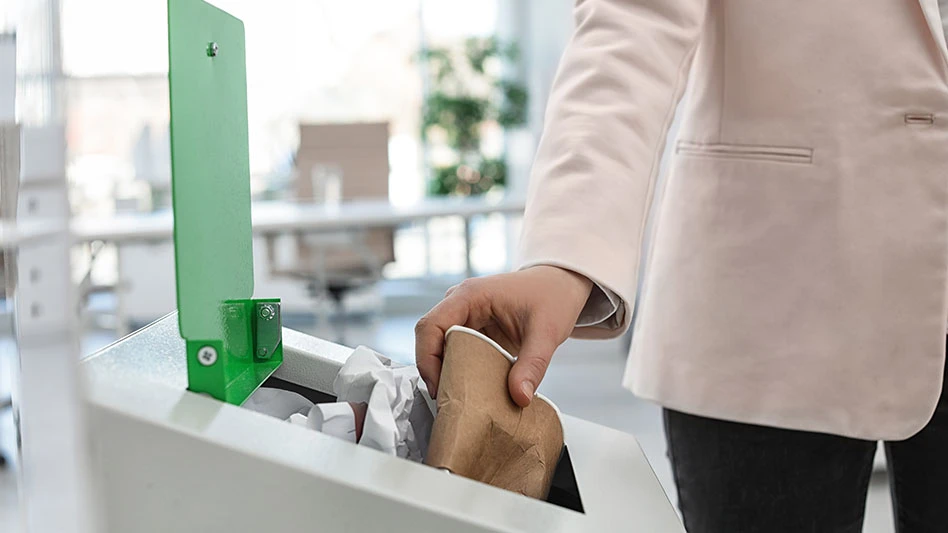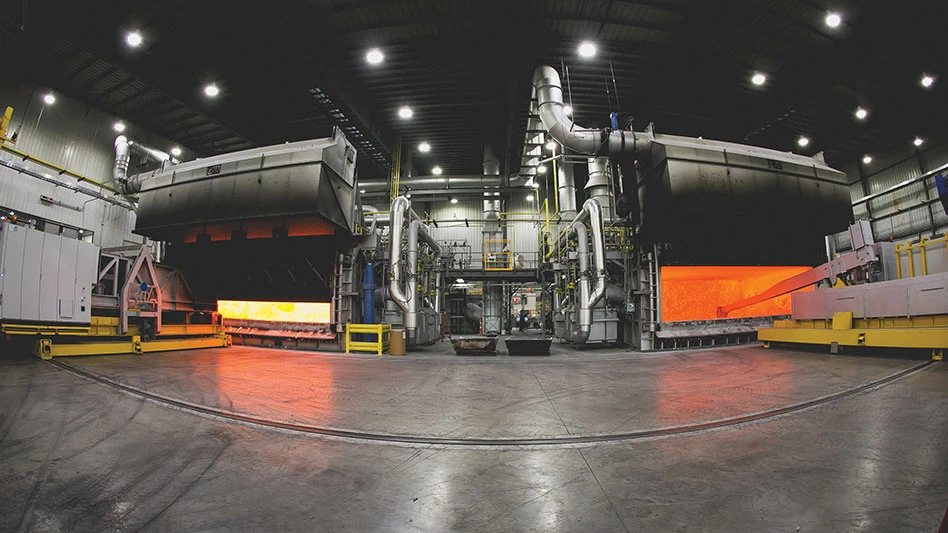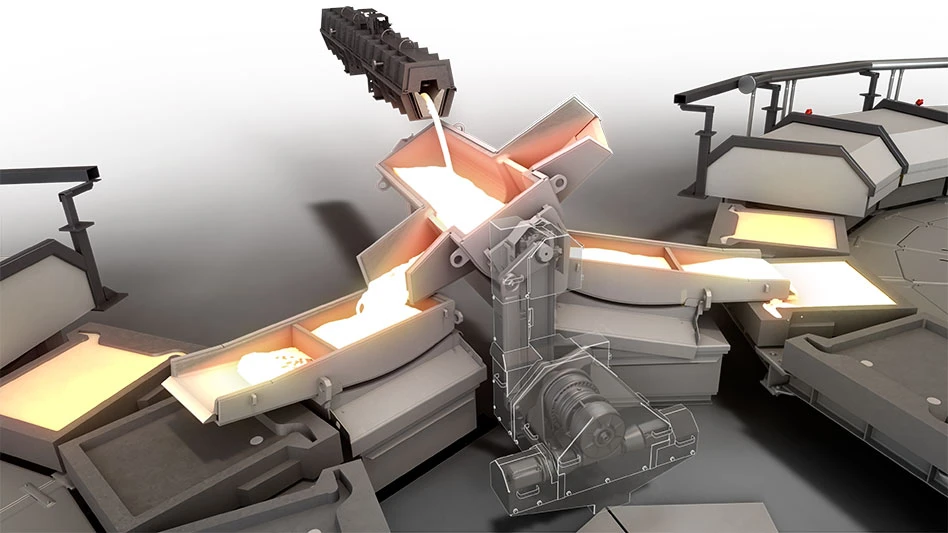Recyclers know all too well that baling plastic can produce headaches. Plastic bottles, with the air that can become trapped inside them during the baling process, are particularly troublesome. Forcing the stubborn material to stay baled especially if it has to be stored outside—is a constant challenge.

Working against plastic’s natural tendency to revert to its molded form can be an uphill battle, but there are steps recyclers can take to produce safer, more secure bales.
The Right Machine. Plastic bales are particularly prone to popping or exploding during storage or transport, especially if they are stored outside and subject to drastic temperature changes. In a perfect environment, like one secluded from the natural elements that cause the material to expand, the bales can theoretically last as long as they’re needed, says Steve Halcsik, production manager at Maine Plastics, Chicago.
But for many recyclers, inside storage space isn’t an option, and they have no choice but to store their material outdoors, where exposure to weather changes, especially direct sunlight and extreme heat, can cause the bale to expand and put stress on the wire holding it together, sometimes breaking the wire altogether.
Plastic limits the kind of baler a recycler can use for the best results, says Joe Szany, director of sales for the NexGen Baling Systems Division of Marathon Equipment, Vernon, Ala.
Szany says the choice comes down to a conventional open-end, auto-tie baler, a manual-tie baler and the two-ram baler, each with its own pros and cons when it comes to dealing with plastic.
"If you bale with a manual tie baler, you can double up on the wire," Szany says. Extra wire adds to the longevity of the bale. But, the extra time usually means fewer bales, and "anyone who’s in plastic for money, they need volume," he says.
The key, Szany says, is making a denser bale in the first place, and he says that’s more likely to result from using a two-ram baler. He says other types of machines are more than capable of producing plastic bales, but that "doesn’t mean that it’s the best thing for the product."
Szany says a two-ram baler also has the capability of exploding bottles as it bales, releasing the air inside that could expand and cause the bale to pop if exposed to temperature shifts. While a conventional auto or manual tie might not be able to, pre-treating bottles by perforating them before baling also releases trapped air, opening up options of the kind of baler a recycler can use, he says.
In addition to the type of machine used, there are many variables to consider when determining the life of a plastic bale, says Roger Williams, sales manager for American Baler Co., Bellevue, Ohio.
Pre-treatment can be a useful step in making a more secure bale, says Williams. "By pre-treating the material, you are essentially removing memory from the material," he says. "The more memory you are able to eliminate, the longer the bales will stay together."
Ken Korney, director of worldwide sales for International Baler Corp., Jacksonville, Fla., says most MRFs use a PET puncher, or a "fluffer," that punches holes in the bottles, releasing air and making them easier to bale.
The catch, however, is financial, says Williams. "[Preconditioning] can be worthwhile, if the end customer can accept the material in that condition," he says. "However, the operator must be aware of the higher cost that is associated with the extra equipment."
Down to the Wire. "The success of baling plastic often has more to do with wire quality than with the baler itself," says Szany. He says putting enough wire on a bale can ensure the bale will be tighter, preventing moisture from seeping in and creating a potentially damaging situation.
Korney recommends at least nine-gauge wire—it may be a more expensive investment at first, but he says it pays off in the long run.
Equipment experts say operators are better off erring on the side of caution and overestimating wire usage. Higher, but controlled wire costs are preferable compared with the cost—in dollars and hours—of re-baling material after a bale pops, Williams says. "The appropriate amount of wire is whatever keeps the operator from having to re-bale," he says.
Williams recommends galvanized wire, often used in two-ram machines, because it tends to have higher strength characteristics than black annealed wire, more typically used in open-end horizontal balers.
In addition, galvanized wire holds up better against the elements and temperature shifts, says Szany.
However, baler type also determines what kind of wire can be used, says Sandy Rosen, CEO of Great Lakes International Recycling, Roseville, Mich. "Heavier gauge wire helps, but you’re limited by what the baler can take," he says.
Tie quality and wire placement can also contribute to stronger, more secure bales, Szany says. He says manual-tie balers afford recyclers the flexibility to put the wires wherever they want.
Halcsik says Maine Plastics uses a criss-cross wiring technique. "Criss-cross banding the bale helps maintain the size of the bale, and there’s less chance of shifting."
Know Your Material. When it comes to baling plastics, practice makes perfect, Robert Render, president of Maine Plastics, says. That means knowing the memory of what you’re baling.
Sponsored Content
Still relying on manual sorters?
Let AI do the heavy lifting. Waste Robotics delivers reliable, high-performance robots tailored for complex waste streams. They require minimal maintenance, are easy to operate, and are designed to boost your recovery rates. Smarter sorting starts with the right partner. Waste Expo Booth #1969 & REMA #2843
Click here to see our robots in action!Sponsored Content
Still relying on manual sorters?
Let AI do the heavy lifting. Waste Robotics delivers reliable, high-performance robots tailored for complex waste streams. They require minimal maintenance, are easy to operate, and are designed to boost your recovery rates. Smarter sorting starts with the right partner. Waste Expo Booth #1969 & REMA #2843
Click here to see our robots in action!Sponsored Content
Still relying on manual sorters?
Let AI do the heavy lifting. Waste Robotics delivers reliable, high-performance robots tailored for complex waste streams. They require minimal maintenance, are easy to operate, and are designed to boost your recovery rates. Smarter sorting starts with the right partner. Waste Expo Booth #1969 & REMA #2843
Click here to see our robots in action!Sponsored Content
Still relying on manual sorters?
Let AI do the heavy lifting. Waste Robotics delivers reliable, high-performance robots tailored for complex waste streams. They require minimal maintenance, are easy to operate, and are designed to boost your recovery rates. Smarter sorting starts with the right partner. Waste Expo Booth #1969 & REMA #2843
Click here to see our robots in action!Sponsored Content
Still relying on manual sorters?
Let AI do the heavy lifting. Waste Robotics delivers reliable, high-performance robots tailored for complex waste streams. They require minimal maintenance, are easy to operate, and are designed to boost your recovery rates. Smarter sorting starts with the right partner. Waste Expo Booth #1969 & REMA #2843
Click here to see our robots in action!Sponsored Content
Still relying on manual sorters?
Let AI do the heavy lifting. Waste Robotics delivers reliable, high-performance robots tailored for complex waste streams. They require minimal maintenance, are easy to operate, and are designed to boost your recovery rates. Smarter sorting starts with the right partner. Waste Expo Booth #1969 & REMA #2843
Click here to see our robots in action!Render says it’s important to leave some time between actually making the bale and tying it. The time delay gives the material a chance to expand some before the bale is restricted by wires, easing the pressure and lessening the chances the bale will pop, he says.
HDPE and PET bottles aren’t the only plastic that can create problems—non-bottle plastic scrap and plastic film come with challenges of their own.
Scrap plastics can be easier to bale—but only if the pieces are big enough and pliable, says Williams.
Automotive parts, like bumpers, for instance, bale relatively easily, says Korney. "They can be baled easier, if they’re pliable enough," he says. "It’s worth trying to compress [scrap plastics] because there’s a market out there for them."
However, some scrap plastics are too brittle and tend to break apart instead of conforming to a bale, Korney says. "We’ve looked at the plastic housing on computers, but those have the tendency of cracking and breaking," he says.
Baling plastic film or pallet wrap presents its own problems, Williams says. "Usually, it is rolled up into a ball and thrown into the baler," he says. "This doesn’t allow the whole charge box to be filled, so the end result is misshapen bales. These don’t load into a container or truck very well, and the bales can’t be stacked."
Render says operators also have to check the conveyor after every bale to make sure film doesn’t wrap around the rollers.
Baling plastic may come with its challenges, but that doesn’t mean it’s impossible to do successfully, says Render. Investing in equipment—especially strong wire—and investing a little extra time to make sure the process is done right can make all the difference. "If [bales] are done properly, nothing’s going to happen to them," he says.
The author is assistant editor of Recycling Today and can be contacted at jgubeno@gie.net.
Get curated news on YOUR industry.
Enter your email to receive our newsletters.

Explore the February 2005 Issue
Check out more from this issue and find your next story to read.
Latest from Recycling Today
- Fenix Parts acquires Assured Auto Parts
- PTR appoints new VP of independent hauler sales
- Updated: Grede to close Alabama foundry
- Leadpoint VP of recycling retires
- Study looks at potential impact of chemical recycling on global plastic pollution
- Foreign Pollution Fee Act addresses unfair trade practices of nonmarket economies
- GFL opens new MRF in Edmonton, Alberta
- MTM Critical Metals secures supply agreement with Dynamic Lifecycle Innovations






